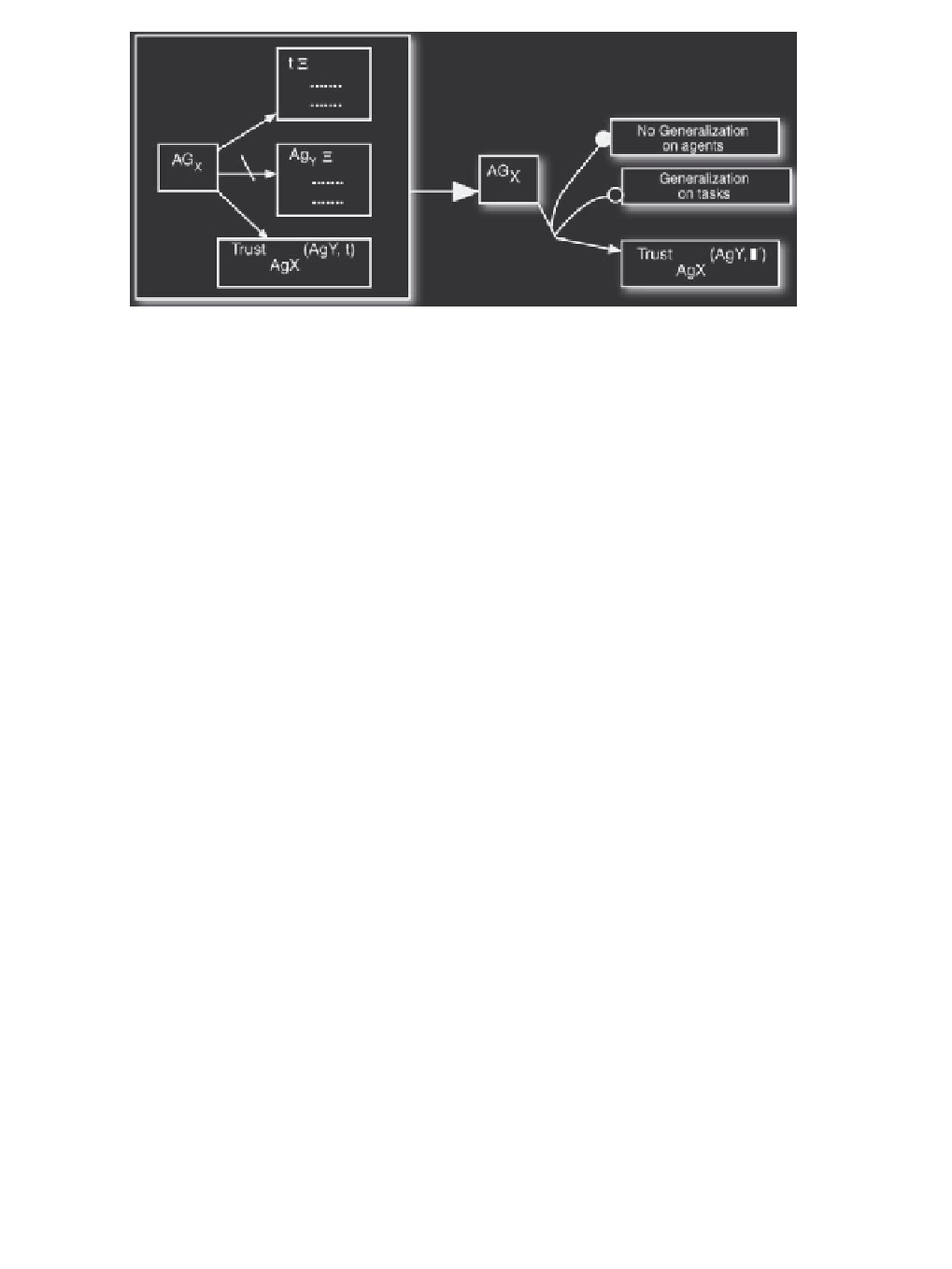Information Technology Reference
In-Depth Information
τ Ξ
τ
τ
Figure 6.14
Generalization in case
Ag
X
knows only the trustee's features. (Reproduced with kind
permission of Springer Science+Business Media
C
2008)
inferential reasoning on the match between properties and the features). In more formal terms:
c1)
Trust
Ag X
(
Ag
Y
,τ
)
c2)
Bel
Ag X
(
f
AgY
≡{
f
1
,...,
f
n
}
)
p
1
,...,
p
k
}∪{
c3)
¬
Bel
Ag X
(
τ
≡{
p
1
,...,
p
m
}
)
's features (
c3
),
Ag
X
can believe that a different (but in some
way analogous) agent
Ag
Z
is trustworthy on the task
Despite the ignorance about
τ
(generalization of the agent) just starting
from the previous cognitive elements (
c1
and
c2
) and from the knowledge of
Ag
Z
's features.
He can evaluate the overlap among the features of
Ag
Y
and
Ag
Z
and decide if and when to trust
Ag
Z
on
τ
. While, in this case, it is not possible to generalize a task because there is no way of
evaluating any analogies with other tasks.
So we can conclude (Figure 6.15) that in the case (
C
) agent generalization is possible: in
fact the set
(c1, c2, c3) permits agent generalizations but does not permit task generalizations
.
Exactly as in case
B
, also in this case we could imagine an
indirect
task generalization. If
Ag
X
trusts a set of different but similar agents
AG1
τ
≡
{
Ag
Y
,Ag
W
...
,Ag
Z
}
(he can evaluate this
τ Ξ
No Generalization
on tasks
Ξ
Ag
Y
AG
X
AG
X
Generalization
on agents
Trust
(AgY,
τ
)
Trust
(Ag
Z
,
τ
)
AgX
AgX
Figure 6.15
Generalization in case
Ag
X
knows only the task's properties. (Reproduced with kind
permission of Springer Science+Business Media
C
2008)





Search WWH ::

Custom Search